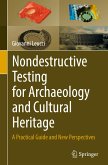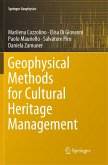Geological Heritage has very diverse elements, both for its intrinsic nature and for its social and scientific significance. These elements have a scientific dimension (stratigraphic, geomorphological, lithological, paleontological, etc.) and a landscape dimension, both with implications for territorial management. In territorial management and planning, it is essential to carry out inventory and cataloging of places of natural and social interest to establish a comprehensive policy. The identification and valuation of the geological and biological heritage, and their interaction in the landscape should favor the conservation and preservation of this natural and historical heritage. Sustainable development implies rational use that prevents the degradation or loss of these unique environments of the natural environment as well as a dissemination and awareness of landscape resources for a better understanding and enjoyment, integrating activities of both environmental education and nature tourism. The diversity of a territory is the result of the complex and continuous interaction of the geological substrate (geotopical) and biological factors that model the existing ecological and evolutionary processes at the level of genes, species, ecosystems, and landscapes and that are expressed in a characteristic representation of organisms adapted to these factors. These vary according to the spatial dimensions and the temporal scales considered, in a wide range, that goes from the geological processes that involve millions of years and vast territories to the casuistic biotic, and anthropic events that can occur in an instant in any territorial sector.
Hinweis: Dieser Artikel kann nur an eine deutsche Lieferadresse ausgeliefert werden.
Hinweis: Dieser Artikel kann nur an eine deutsche Lieferadresse ausgeliefert werden.








